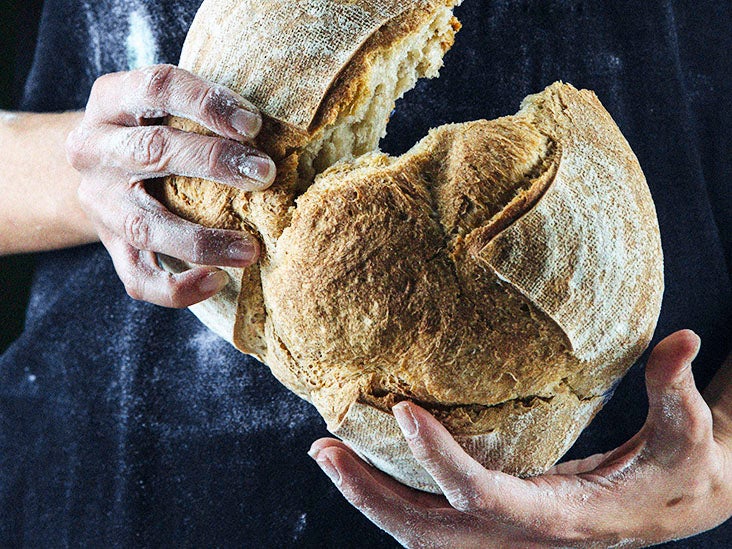Yeast is a type of fungus. Some foods and drinks, such as baked goods and alcoholic beverages, may contain or use yeast. People with yeast allergies should avoid products containing yeast.
Published in 1983, The Yeast Connection attributed a wide range of symptoms to a condition called yeast hypersensitivity – or allergy. Additionally, the authors suggest that many of them were allergic, or at least sensitive, to yeast.
In 1986, the American Academy of Allergy and Immunology published a statement calling into question the existence of yeast hypersensitivity. It highlighted scientific gaps in research linking yeast to health problems. Despite these doubts, some researchers
Fast Facts About Yeast Allergies:
- Yeast hypersensitivity remains controversial.
- Yeast hypersensitivity syndrome may not involve an allergy. It is important to distinguish the presumed effects of this syndrome from a true yeast allergy.
- People with severe yeast allergies may need to avoid eating outside the home.
Yeast is a fungus found in many foods.
Allergy to inhaling fungal spores is a well-described trigger for allergic rhinitis (sneezing, stuffy nose, itchy eyes). Allergic symptoms due to direct ingestion of yeast or other fungi remain poorly understood.
There are few, if any, rigorous studies on yeast allergy to clarify typical symptoms, treatments, diagnoses, foods to avoid, or risk factors. Knowledge of yeast allergy comes only from case reports and case series, suggesting that true allergy to yeast ingestion is extremely rare.
Fungi, including mold and yeast, reproduce using tiny spores that can travel through the air. People allergic to these substances may develop respiratory symptoms when they inhale the spores.
Symptoms of an allergy to inhaled yeast and mold spores may include:
- to sneeze
- cough
- itchy eyes
- congestion
- breathing difficulties
This allergy can also trigger an attack in people with asthma.
However, the American College of Allergy, Asthma, and Immunology caution that no studies have conclusively linked airborne allergens to severe allergic reactions. Even in people with a severe allergy to nutritional yeast, inhaled yeast is unlikely to trigger a reaction.
Some alternative medicine practitioners who believe in yeast hypersensitivity promote the use of antifungal medications, such as nystatin. There is little scientific evidence supporting the use of these medications in people who do not have fungal infections.
The most effective treatment for a diagnosed yeast allergy is to avoid foods containing yeast. People who consume yeast and develop mild allergic reactions, such as skin rashes, can often manage their symptoms with antihistamines.
People suffering from anaphylactic reactions will need emergency medical attention if they accidentally eat yeast. An epinephrine injector can prevent anaphylaxis from becoming fatal.
Alternative medicine practitioners often diagnose yeast hypersensitivity syndrome based on symptoms alone.
True yeast allergies can be diagnosed by an allergist, who will ask about a history of allergic reactions to certain foods. They can also perform a skin test to confirm the diagnosis. This will involve the allergist applying a tiny amount of yeast to the skin to test for a reaction.
They may also recommend a blood test, which will determine the presence of an antibody protein that may indicate a food allergy.
People with a history of anaphylactic reactions to yeast or any other food allergen may need to undergo comprehensive testing. This can identify additional allergens and prevent potentially life-threatening reactions.
Read labels carefully to reduce the risk of accidentally consuming yeast. Foods that contain yeast include:
- Bakery products: Yeast is commonly used to leaven foods, such as cakes and sourdough breads.
- Alcoholic beverages: Yeast is used to ferment the sugar in most alcoholic beverages. However, distilled spirits may not contain much yeast.
- Some spreadable foods: Products like Marmite and Vegemite contain yeast.
Since some people with yeast allergies may also be allergic to mold, testing can help determine if additional foods may cause reactions. These can include cheeses made with mold.
An allergy occurs when the body overreacts to a substance that may be harmless to others. The body treats this substance – the allergen – as a dangerous invader, and a range of symptoms can develop.
Researchers don’t yet agree on why some people develop allergies, but a combination of factors environmental factors and genetics may be to blame.
There has been little research into risk factors for yeast allergies. It is impossible to predict with certainty whether a person will develop this allergy and how severe their reactions will be. If a person suspects a yeast allergy, they should seek medical attention.
The controversial idea that some people are hypersensitive to yeast continues to influence alternative medicine. However, in very few people, yeast allergies can cause a range of symptoms. People who think they may have either disorder should see a doctor for testing.
Self-diagnosing allergies can cause unnecessary fear. Professional diagnosis may be necessary to prevent serious allergic reactions. If a person has a severe yeast allergy, they may need to carry an epinephrine injector.
